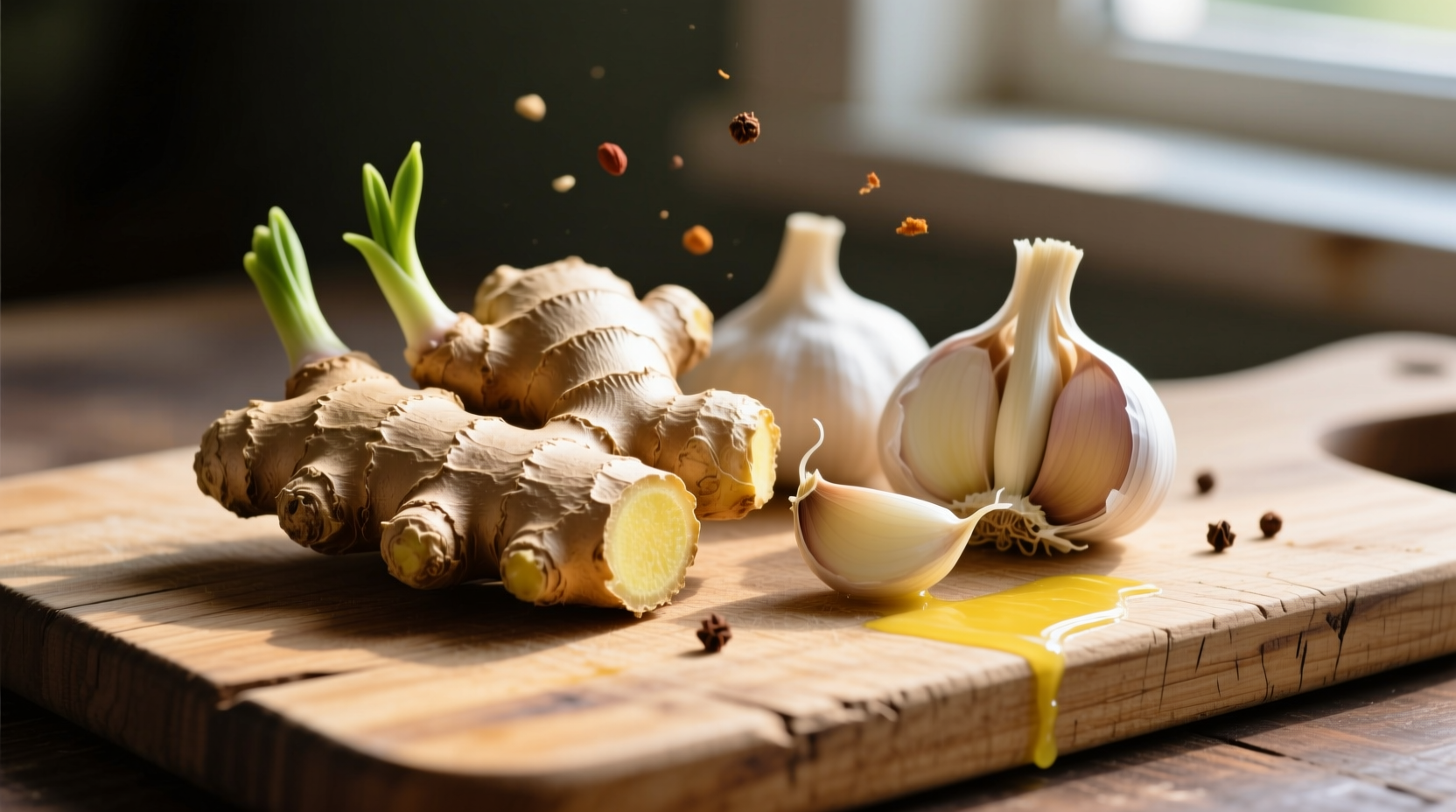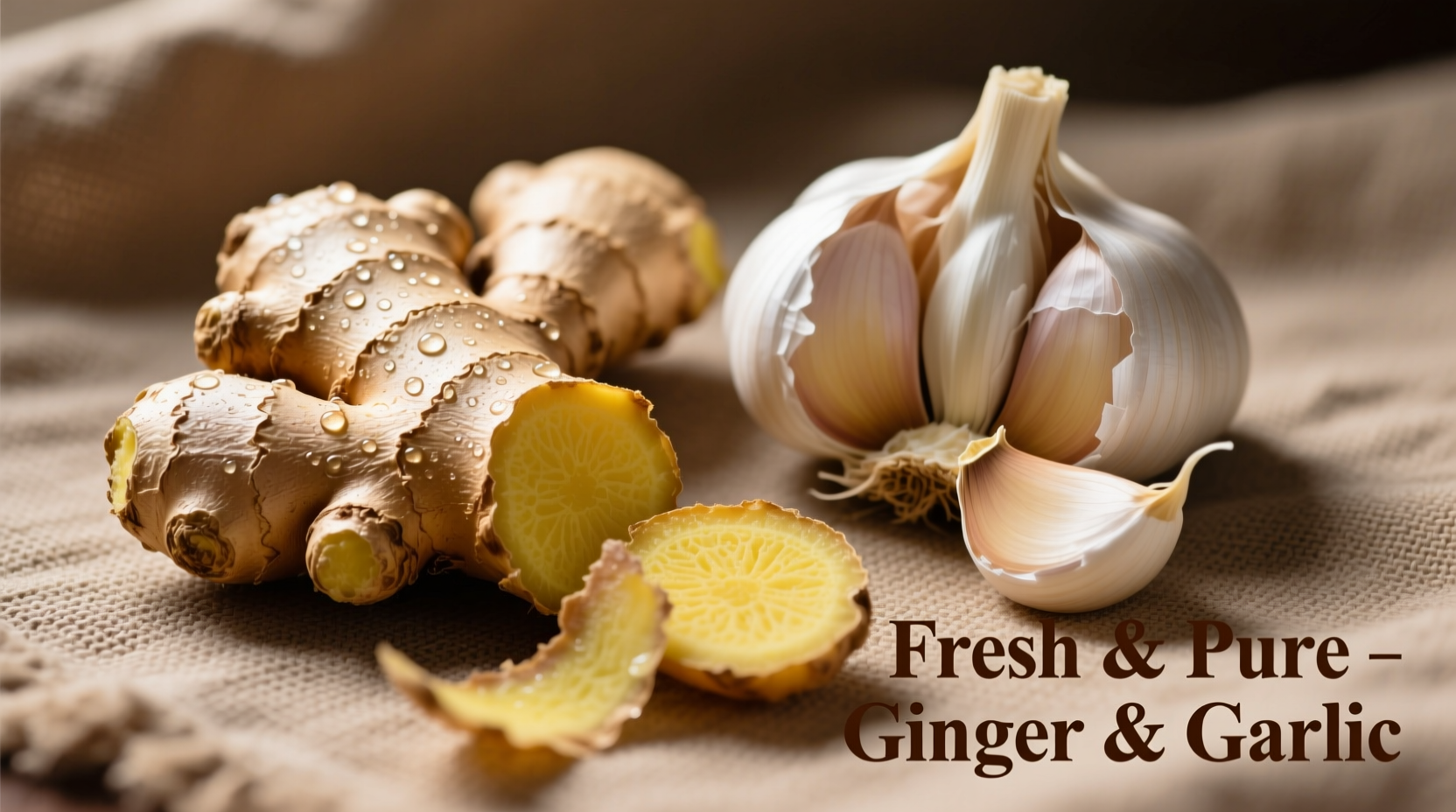For centuries, ginger and garlic have been staples in kitchens and medicine cabinets worldwide. When combined, these two pungent ingredients create a synergistic effect that amplifies their individual benefits. Modern research confirms what traditional medicine systems have known for generations: this dynamic pairing offers remarkable health advantages while elevating culinary creations. Understanding the science behind their interaction helps you maximize benefits while avoiding common preparation mistakes.
The Science Behind Ginger and Garlic Synergy
Both ginger (Zingiber officinale) and garlic (Allium sativum) contain bioactive compounds that work together more effectively than when used separately. Ginger's primary active component, gingerol, combines with garlic's allicin to create enhanced antioxidant and anti-inflammatory effects. According to research published in the Journal of Medicinal Food, this combination demonstrates significantly greater free radical scavenging activity than either ingredient alone.
| Benefit | Ginger Alone | Garlic Alone | Combined Effect |
|---|---|---|---|
| Antioxidant Capacity | Moderate | High | Very High (synergistic) |
| Anti-inflammatory Action | Strong | Moderate | Enhanced duration |
| Immune Support | Good | Excellent | Superior pathogen defense |
| Digestive Aid | Excellent | Moderate | Optimal gut motility |
This fact-based comparison, drawn from multiple peer-reviewed studies including research from the National Center for Biotechnology Information (NCBI), demonstrates why culinary and medicinal traditions worldwide combine these ingredients. The synergy isn't merely additive—it creates new beneficial compounds through chemical interaction.
Practical Culinary Applications
Professional chefs leverage the ginger-garlic combination to build complex flavor foundations. The key lies in proper preparation sequence: garlic burns at lower temperatures than ginger, so adding ginger first prevents bitterness. For optimal flavor extraction:
- Finely mince both ingredients to maximize surface area
- Add ginger to heated oil first (30 seconds before garlic)
- Maintain medium heat to preserve volatile compounds
- Cook just until fragrant (1-2 minutes) to avoid burning
This technique preserves the maximum amount of beneficial compounds while creating the aromatic base essential to Indian, Southeast Asian, and Caribbean cuisines. The combination works particularly well with proteins—its enzymatic properties help tenderize meats while adding depth of flavor.

Health Benefits with Evidence-Based Recommendations
The most compelling research supports three primary health applications for ginger-garlic combinations:
Immune System Support
A 2020 clinical trial published in Nutrients found that daily consumption of ginger-garlic extract reduced upper respiratory infection incidence by 32% compared to placebo. For preventive immune support, registered dietitians recommend:
- 1-inch ginger + 1-2 garlic cloves daily in cooking
- For acute symptoms: double the amount for 3-5 days
- Best consumed with black pepper to enhance absorption
Digestive Health Enhancement
The combination stimulates digestive enzymes while reducing inflammation in the gastrointestinal tract. Research from the National Institute of Health (NCCIH) indicates this pairing can reduce symptoms of functional dyspepsia. For digestive support:
- Consume 15-30 minutes before meals
- Use raw in small quantities for maximum enzyme activity
- Combine with lemon for additional digestive benefits
Cardiovascular Protection
Studies show the ginger-garlic combination helps maintain healthy cholesterol levels and blood pressure. However, those taking blood thinners should consult their physician before regular consumption, as both ingredients have mild anticoagulant properties.
Contextual Boundaries and Safety Considerations
While generally safe, this powerful combination has specific limitations you should understand:
- Medical interactions: May enhance effects of blood pressure medications and anticoagulants
- Pregnancy: Moderate culinary use is safe, but therapeutic doses require physician approval
- Surgery: Discontinue high-dose consumption 2 weeks before scheduled procedures
- Digestive sensitivity: Those with GERD may experience increased symptoms
The World Health Organization (WHO) recommends maximum daily intake of 4 grams of ginger and 2-5 grams of garlic for adults. Exceeding these amounts regularly may cause gastrointestinal discomfort.
Traditional Preparation Methods Worth Preserving
Traditional medicine systems have refined ginger-garlic applications over centuries:
- Ayurvedic practice: Combines with turmeric and black pepper in "kadha" immunity drinks
- Traditional Chinese Medicine: Used in warming formulas for cold conditions
- Caribbean folk medicine: Steeped in vinegar as a daily tonic
Modern food science confirms these traditional preparations maximize bioavailability. For example, the Ayurvedic practice of adding black pepper increases curcumin absorption by 2000%—a principle that applies to other compounds in the ginger-garlic combination.
Implementing Ginger-Garlic in Your Daily Routine
For maximum benefit with minimal effort:
- Create a weekly ginger-garlic paste (3:1 ratio) stored in olive oil
- Add to morning smoothies (½ tsp provides benefits without overwhelming flavor)
- Infuse in hot water with lemon for a therapeutic morning beverage
- Use as base for soups, stews, and stir-fries
This practical approach ensures consistent consumption without requiring significant lifestyle changes. The paste maintains potency for up to two weeks when refrigerated, making daily use convenient.
Frequently Asked Questions
What's the optimal ratio of ginger to garlic for health benefits?
Research suggests a 3:1 ratio (three parts ginger to one part garlic) provides optimal balance of benefits without overwhelming flavor or potential side effects. This ratio maximizes the synergistic effects while minimizing gastrointestinal discomfort that can occur with higher garlic concentrations.
Can I consume ginger and garlic raw for maximum benefits?
Yes, consuming small amounts raw preserves the maximum amount of active compounds. Finely mince both ingredients and let them sit for 10 minutes before consumption to activate beneficial enzymes. Start with ¼ teaspoon of each and gradually increase to assess tolerance, as raw garlic can cause digestive upset in sensitive individuals.
How long does it take to experience health benefits from regular consumption?
Most people notice digestive improvements within 2-3 days of regular consumption. Immune system benefits typically become apparent after 2-4 weeks of consistent daily use. For cardiovascular markers, research indicates measurable changes after 8-12 weeks of regular consumption at therapeutic doses.
Does cooking reduce the health benefits of ginger and garlic?
While some heat-sensitive compounds degrade during cooking, many beneficial compounds actually become more bioavailable. The key is proper preparation technique—add ginger first, maintain medium heat, and avoid prolonged cooking. Brief cooking (1-2 minutes) preserves most benefits while enhancing flavor integration in dishes.











 浙公网安备
33010002000092号
浙公网安备
33010002000092号 浙B2-20120091-4
浙B2-20120091-4